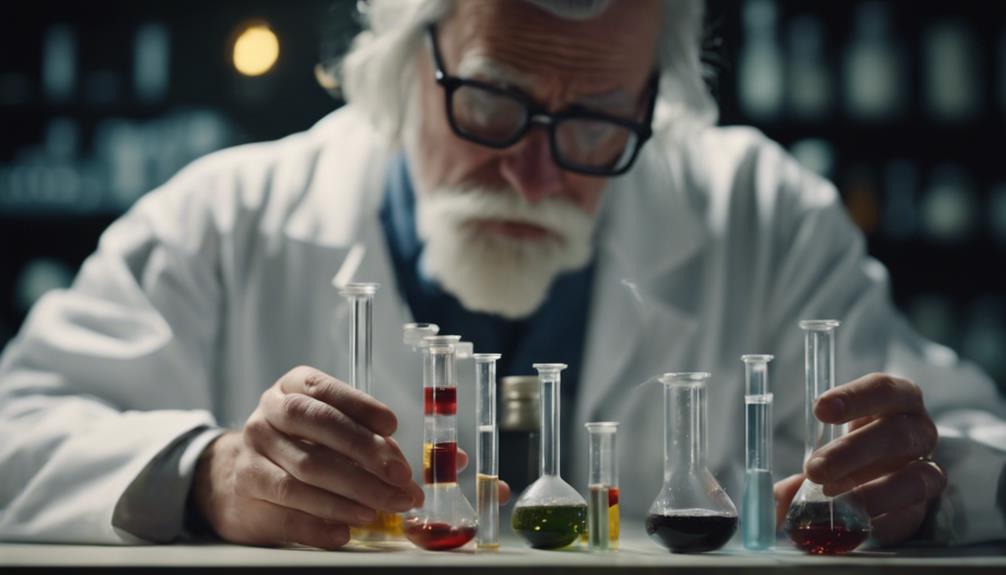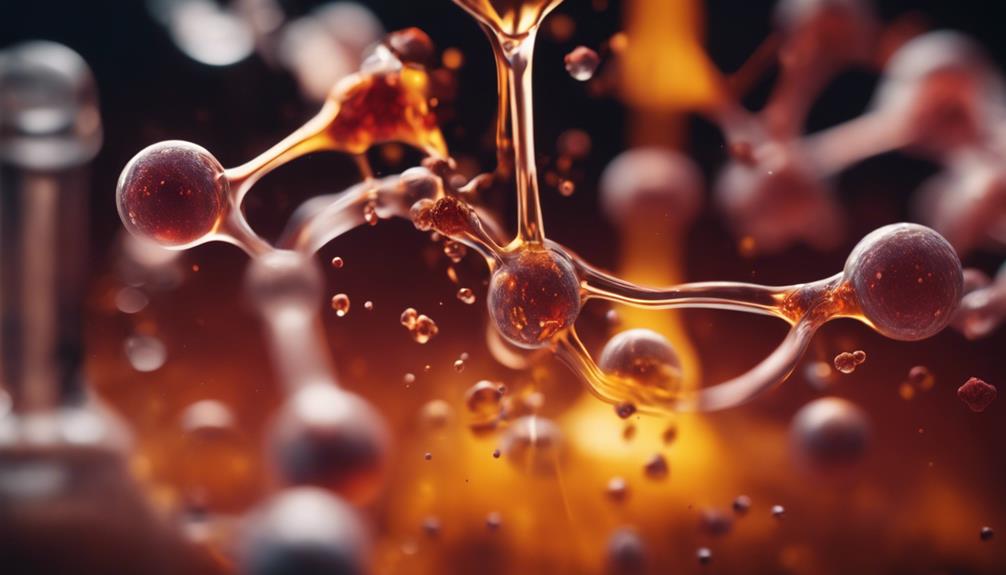The Law of Conservation of Mass is a fundamental principle in the sciences, stating that in a closed system, mass cannot be created nor destroyed, only transformed or rearranged. This law, dating back to the 18th century, holds significance in various fields such as chemistry, physics, and environmental science.
Understanding its implications allows scientists to predict reactions, analyze physical processes, and comprehend natural phenomena. But how does this law impact the way we view matter and energy in the universe? Let's explore its depths beyond the surface understanding.
Origins of the Law

The Law of Conservation of Mass, a fundamental principle in chemistry and physics, finds its origins in the meticulous experiments conducted by Antoine Lavoisier in the late 18th century. Lavoisier, a French chemist known as the 'Father of Modern Chemistry,' played a crucial role in shaping our understanding of the conservation of mass through his groundbreaking work.
Lavoisier's historical background is marked by his revolutionary experiments that laid the foundation for modern chemistry. His scientific significance lies in his discovery that in a chemical reaction, matter is neither created nor destroyed but simply rearranged. This principle challenged earlier beliefs and paved the way for a more accurate understanding of chemical reactions.
Lavoisier's experiments demonstrated that the total mass of substances involved in a chemical reaction remains constant before and after the reaction, leading to the formulation of the Law of Conservation of Mass. This law continues to be a cornerstone of modern chemistry, guiding scientific research and discoveries.
The Principle Explained
Explaining the fundamental concept of mass conservation in chemical reactions involves understanding the intricate balance of matter transformations. The law of conservation of mass states that in a closed system, matter cannot be created or destroyed; it can only change forms. This means that the total mass of the reactants must equal the total mass of the products in a chemical reaction.
For instance, when hydrogen gas (H2) combines with oxygen gas (O2) to form water (H2O), the total mass of the water produced is equal to the total mass of the hydrogen and oxygen gases consumed.
In another example, when iron (Fe) rusts to form iron oxide (Fe2O3), the total mass of the rust is the same as the total mass of the iron and oxygen involved in the reaction. This principle holds true for all chemical reactions, illustrating the conservation of mass in action.
Applications in Chemistry

Demonstrating the foundational principles of mass conservation, the applications of this law in chemistry play a crucial role in understanding and predicting the outcomes of chemical reactions. Chemical reactions involve the rearrangement of atoms to form new substances, following the principles of the atomic theory. The law of conservation of mass is instrumental in these reactions, as it states that the total mass of the reactants must equal the total mass of the products. This principle allows chemists to balance chemical equations by ensuring that mass is conserved throughout the reaction process.
Moreover, the law of conservation of mass is utilized in stoichiometry, a branch of chemistry that quantitatively examines the relationships between reactants and products in chemical reactions. By applying this law, chemists can calculate the exact amounts of reactants needed to produce a certain amount of product, or predict the mass of products formed from given reactant quantities. In essence, the law of conservation of mass serves as a fundamental tool in understanding the quantitative aspects of chemical reactions, guiding experiments, and predicting outcomes based on the atomic theory.
Implications in Physics
Have the implications of the law of conservation of mass in physics been thoroughly explored and understood?
In the realm of physics, the law of conservation of mass holds significant implications, especially when considering quantum mechanics and energy transfer. In quantum mechanics, the conservation of mass is intertwined with the conservation of energy, forming the basis for understanding fundamental particles and their interactions. The law of conservation of mass plays a crucial role in explaining various physical phenomena, such as chemical reactions, nuclear reactions, and particle interactions.
Moreover, in physics, energy transfer often accompanies mass transfer, highlighting the interconnected nature of these two fundamental properties. The conservation of mass provides a framework for analyzing and predicting the outcomes of energy transfer processes, ensuring that the total mass and energy in a system remain constant. By incorporating the principles of mass conservation into the study of energy transfer, physicists can elucidate complex processes occurring at both macroscopic and microscopic scales, further deepening our understanding of the physical world.
Relevance in Environmental Science

The law of conservation of mass holds significant relevance in environmental science, particularly in the context of analyzing material flows and transformations within ecosystems and the impact of human activities on natural systems. In studying ecosystem dynamics, the law of conservation of mass serves as a fundamental principle that governs the cycling of nutrients, energy, and pollutants within biological communities. Understanding how matter is neither created nor destroyed but rather transformed is crucial for predicting the consequences of human-induced changes in the environment.
Moreover, the law plays a pivotal role in pollution control efforts. By recognizing that pollutants released into the environment remain within the system in various forms, environmental scientists can develop strategies to mitigate contamination and safeguard ecosystem health. Through adhering to the principles of mass conservation, researchers can track the fate of pollutants, assess their environmental impact, and implement targeted interventions to minimize harm to natural systems. In essence, the law of conservation of mass provides a foundational framework for addressing environmental challenges and promoting sustainable practices.
Frequently Asked Questions
How Does the Law of Conservation of Mass Relate to the Concept of Energy Conservation?
The law of conservation of mass is closely linked to energy conservation in systems at thermodynamic equilibrium. Both principles dictate that the total mass or energy within a closed system remains constant, demonstrating fundamental principles of physics.
Can the Law of Conservation of Mass Be Violated Under Certain Circumstances?
Under certain circumstances, the law of conservation of mass cannot be violated without consequences. Experimental evidence consistently supports this fundamental principle, demonstrating that mass is neither created nor destroyed in chemical reactions, affirming its validity.
Are There Any Exceptions to the Law of Conservation of Mass in Chemical Reactions?
Exceptions to the law of conservation of mass in chemical reactions are rare but can occur in nuclear reactions where mass can be converted into energy. These deviations are well-documented and do not violate the underlying principles of conservation laws.
How Does the Law of Conservation of Mass Apply to Biological Systems and Living Organisms?
In biological systems and living organisms, the law of conservation of mass applies by governing nutrient utilization, metabolism, growth, and development. It ensures that atoms are neither created nor destroyed but instead transformed.
What Are Some Real-World Examples Where the Law of Conservation of Mass Plays a Crucial Role in Everyday Life?
In environmental impact, waste management relies on the law of conservation of mass to ensure efficient resource utilization and minimize pollution. Similarly, food production in agriculture adheres to this law to optimize crop growth and sustainability.
Conclusion
In conclusion, the law of conservation of mass states that matter cannot be created or destroyed, only transformed from one form to another.
This fundamental principle has origins in early scientific discoveries and has far-reaching applications in various fields such as chemistry, physics, and environmental science.
Understanding and adhering to this law is essential for accurately predicting and explaining chemical reactions, physical processes, and environmental changes.










